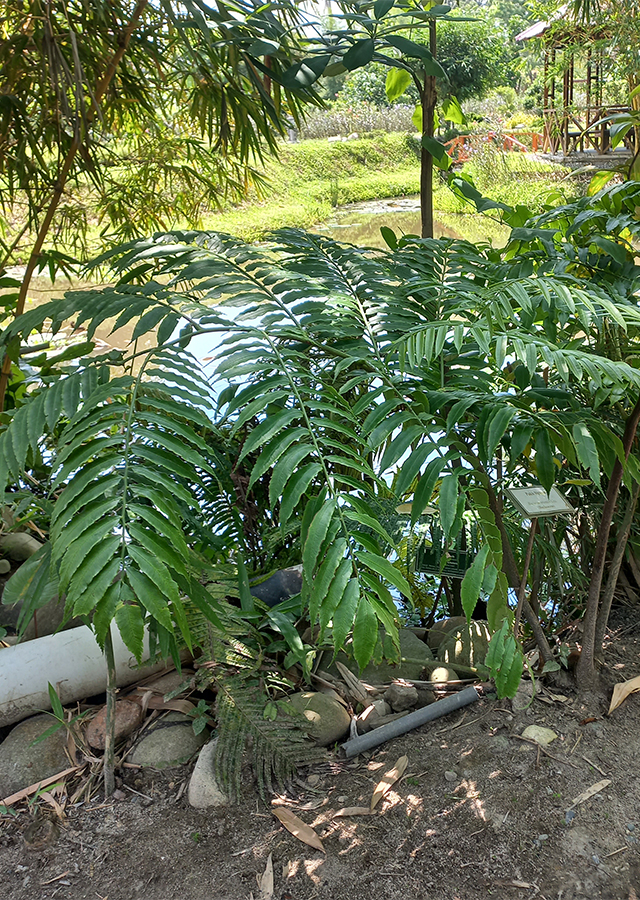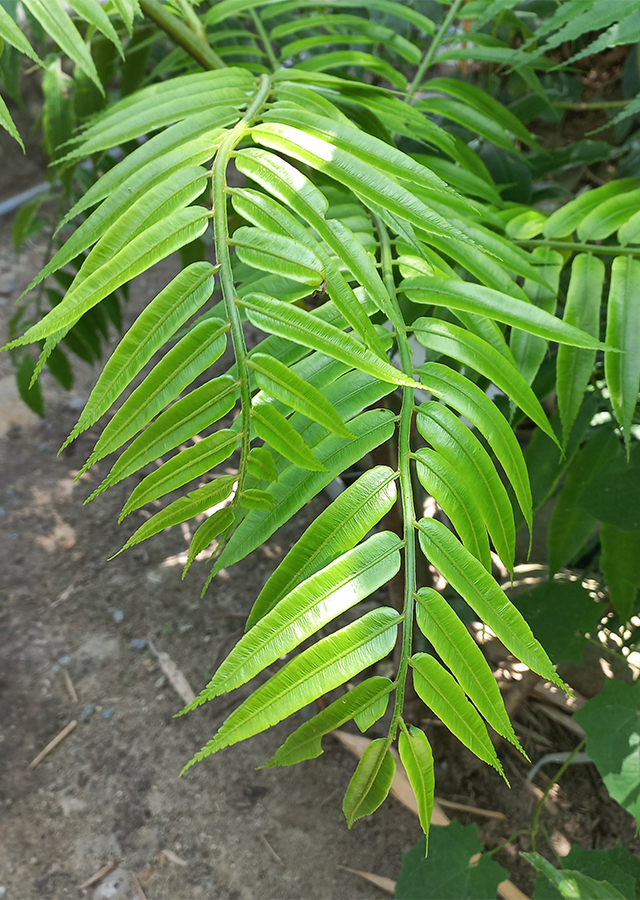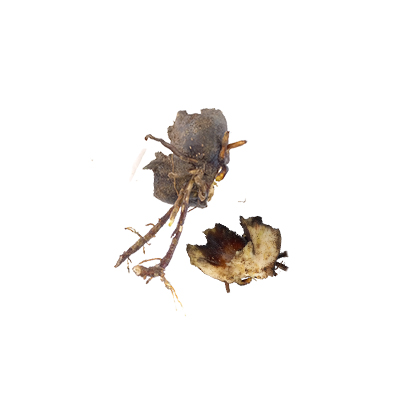Centipede Fern
Blechnum orientale L.
Aspleniaceae
Location in our garden
Aquatic



Synonym
Asplenium orientale (L.) Bernh.
Blechnopsis cumingiana C.Presl
Blechnum adnatum Reinw. ex de Vriese
Habitus
Fern. An evergreen fern forming a clump of arching fronds from 20 - 200 cm tall, growing from a thick rhizome that rises to a short, erect trunk
Part Used
Leaves
The Whole Plant
Rhizome
Growing Requirements
Full Sunshine
Need Shade
Habitat
Wetland
Forest
Terrestrial
Overview
Blechnum orientale has a wide distribution area ranging from India, Nepal, South China, Southeast Asia to Japan, Australia, and Polynesia. The plant is sometimes harvested from the wild for local use as a food and a medicine. It is often cultivated as an ornamental. Centipede fern is a species known as an important edible medicinal plant in Malaysia.
Vernacular Names
Pakong-alagdan (Philippines), Long chuan jue (Chinese), Hastajori (India), Paku lipan (Malay), Awor (Papua New Guinea).
Agroecology
Found growing from the lowlands to an altitude of 1,500 m above sea level. Usually found in open areas, damp places, along roadsides in rainforests or dry areas, along riverbanks and often grows as primary colonies after forest is cleared or burned. This species prefers open locations, but can tolerate partial shade conditions as well as shady and wet areas. Plants in shade tend to have leaflets that appear wider, thinner and paler with leaf edges curled inward.
Morphology
- Roots - has a rhizome that spreads short, erect, covered by dense scales.
- Stems - slightly erect, strong, covered with dark brown scales.
- Leaves - compound, alternately arranged, green, pinnate, leaf blade lanceolate to oblong, up to 200 cm long and up to 54 cm wide, leaf veins brown to pink, glabrous or with few hairs. The leaflets are about 6 - 70 pairs, sitting, linear in shape, the base is rounded to an inverted triangle, the tip is tapered, the edges are serrated and wavy. Sori under the leaf, along near both leaf edges, linear and parallel to the midrib. Petiole up to 70 cm, purplish when young, scaly at the base. Stipes tufted, erect. Spores are yellowish brown.
Cultivation
Propagated by spores.
Chemical Constituents
Essential oils, phenolic compounds, triterpenoids, flavonoids, tannins, saponins, quinones, steroids, polyphenolic compounds, phenols, alkaloids, glycosides, cardiac glycosides, coumarins, betacyanins, proanthocyanidins, blechnic acid, 8-epiblechnic acid, brainic acid, 22-dehydrocampesterol , 24-alpha-ethyl-cholest-5-en-3-beta-ol, 24-alphaethyl-methyl-cholest-5-en-3-beta-ol, 24-beta-methyl-cholest-5-en-3 -beta-ol, 24-alpha-cholest-5, 22-dien-3-beta-ol, chlorogenic acid.
Traditional Medicinal Uses
- Used for urinary complaints.
- In China, the rhizomes are used as anthelmintic.
- In India, used for impotence; boils in infants and older children, diarrhea,
- Used to stop wound bleeding.
- In Malaysia, used for abscesses, blisters and sores; poultice of young leaves for furuncles and boils.
- Plant is pounded with some kerosene and applied to fungal skin infections, especially ringworm.
- In Papua New Guinea, new fronds are eaten to induce sterility in women, new leaves ingested daily for three successive days, then repeating the course after a fortnight.
- In India, paste of young frond and underground rhizome are mixed with the dried powder of Zingiber officinale and applied over fresh cut wounds to cure pain and stop bleeding.
- The Reang tribe of Tripura, northeast India use a hot decoction of pinnae applied externally over abscess once daily until it dries up.
- Used as a poultice in boils; rhizomes used as anthelmintic.
Part Used
Reference Sources
- Royal Botanic Gardens. Plants of the World Online: Blechnum orientale L.. https://powo.science.kew.org/taxon/urn:lsid:ipni.org:names:17059900-1. 22-04-22.
- Stuartxchange. 2020. Philippine Medicinal Plants: Pakong-alagdan. http://www.stuartxchange.org/Pakong-alagdan.html. 22-04-22.
- Verma S. C. et al. 2019. The Indian Fern Journal. Volume 36, Nos.1&2. The Indian Fern Society.
- Dash Gouri Kumar, Abdullah Mohammad Syafiq, Yahaya Ruhaiyem, Majeed Shahnaz. 2015. Blechnum orientale Linn.: An Important Edible Medicinal Fern. International Journal of Pharmacognosy and Phytochemical Research, 7(4); 723-726.
- Flora Fauna Web. 2021. Blechnopsis orientalis (L.) C.Presl. https://www.nparks.gov.sg/florafaunaweb/flora/5/5/5542. 22-04-22.
- Tropical Plants Database, Ken Fern. 2021. Blechnum orientale. http://tropical.theferns.info/viewtropical.php?id=Blechnum+orientale. 22-04-22.


